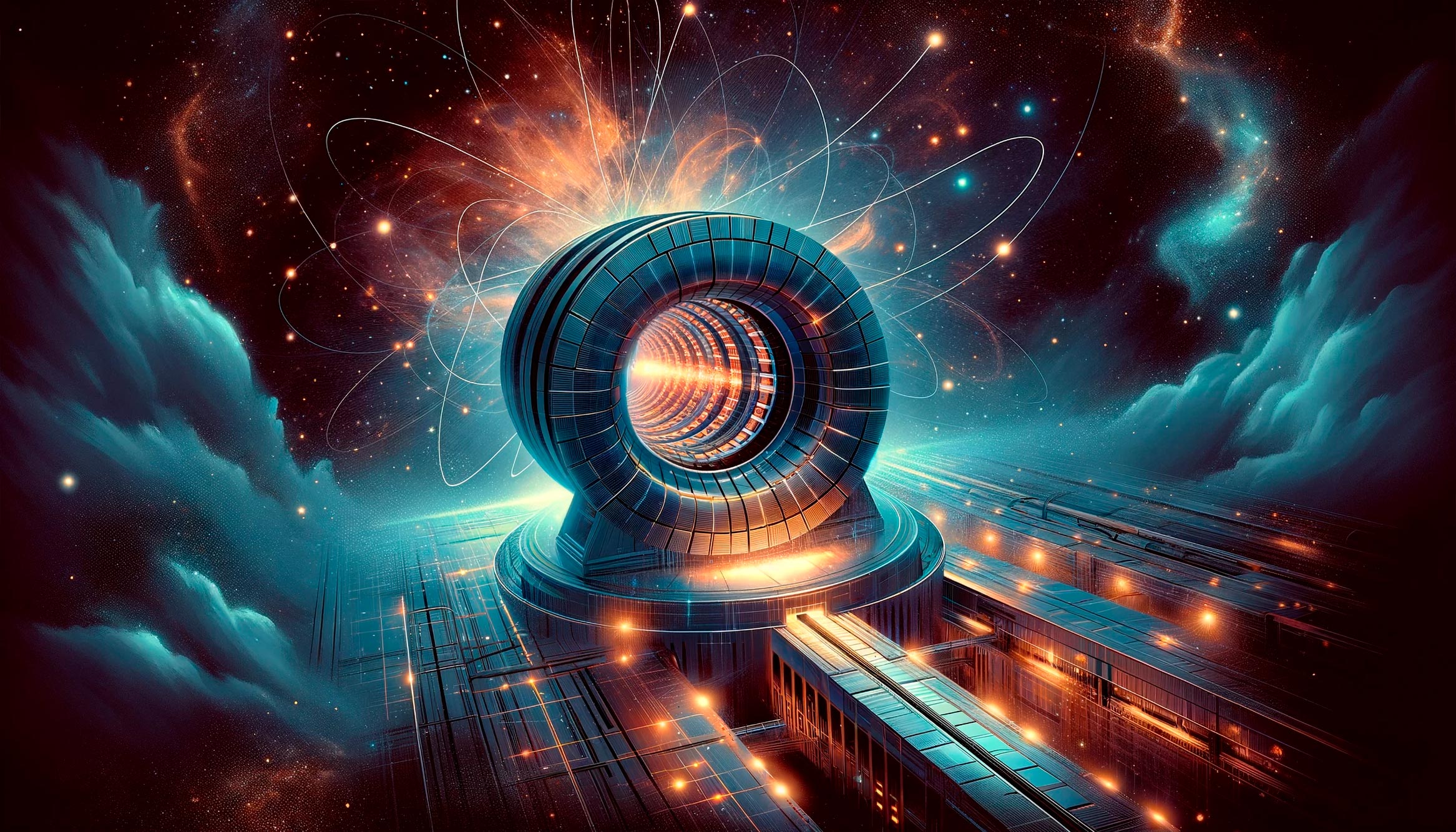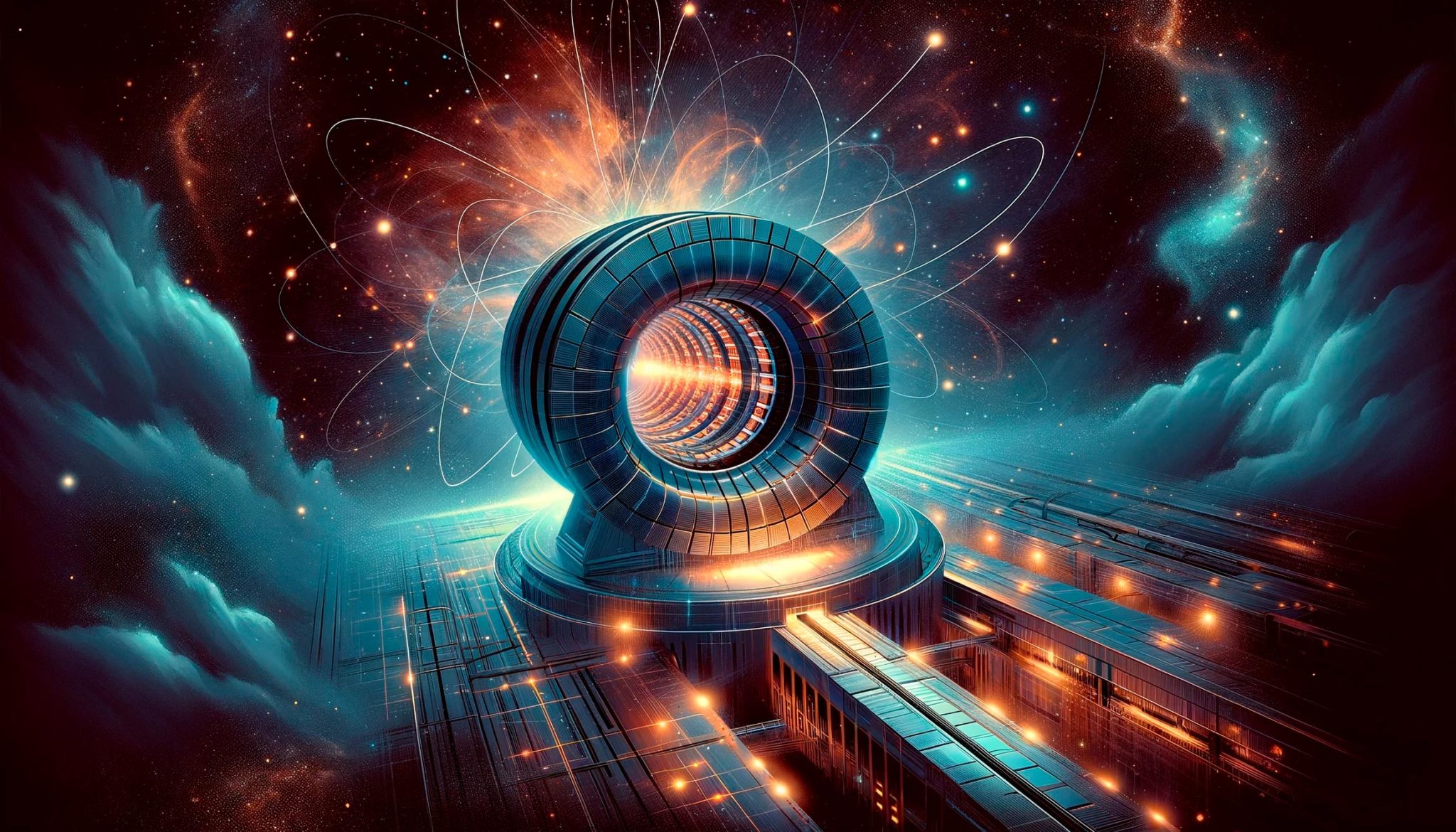

Researchers at CERN’s ATLAS experiment at the Large Hadron Collider have presented a new way to search for dark matter through near-visible jets, representing a major paradigm shift in the field. Their work provides new directions and stringent upper bounds in the ongoing quest to understand dark matter.
Researchers are studying whether dark matter particles are actually produced within a jet of Standard Model particles.
The existence of dark matter is a long-standing mystery in our universe. Dark matter makes up about a quarter of our universe, but it does not interact significantly with regular matter. The existence of dark matter has been confirmed by a series of astrophysical and cosmological observations, including recent stunning images taken by the James Webb Space Telescope. However, to date, no experimental observation of dark matter has been reported. The existence of dark matter has been a question that high-energy scientists and astrophysicists around the world have been investigating for decades.
Advances in dark matter research
“This is why we conduct basic science research, to explore the deepest secrets of the universe. The Large Hadron Collider is in CERN “It is the largest experiment ever created, and particle collisions that create Big Bang-like conditions can be exploited to search for signs of dark matter,” says Professor Deepak Kar, from the School of Physics at the University of the Witwatersrand in Johannesburg, South Africa. .

A graphical representation of how near-visible jets would appear in the ATLAS detector if they existed. Credit: CERN
Working on the ATLAS experiment at CERN, Carr and former PhD student Sukanya Sinha (now a postdoctoral researcher at the University of Manchester), devised a new way to search for dark matter. Their research was published in the journal, Physics Letters B.
A new approach to detecting dark matter
“There have been a large number of searches for dark matter at the LHC over the past few decades now, and they have focused on weakly interacting massive particles, called WIMPs,” Carr says. “WIMPS are one of the classes of particles that are hypothesized to explain dark matter because they do not absorb or emit light and do not interact strongly with other particles. However, since no evidence of the existence of WIMPs has been found so far, we realized that the search for dark matter needed Quantum leap.

Dr. Sukanya Sinha and Professor Deepak Kar. Credit: Wits University
“What we were wondering was whether dark matter particles are actually being produced within a stream of Standard Model particles,” Carr said. This led to the discovery of a new detector signature known as near-visible jets, which scientists had never looked at before.
High-energy proton collisions often produce parallel sprays of particles, collected in so-called jets, from the decay of ordinary quarks or gluons. Semi-visible flows may arise when virtual dark quarks decay partly into Standard Model quarks (known particles) and partly into stable dark hadrons (the “invisible part”). Because they are produced in pairs, usually together with additional standard model jets, an energy imbalance or energy loss in the detector arises when all the jets are not perfectly balanced. The direction of the lost energy often corresponds to one of the nearly visible jets.
This makes searching for near-visible jets very difficult, as this event signature can also arise due to incorrectly measured jets at the detector. Carr and Sinha’s new method of searching for dark matter opens new directions in the search for the existence of dark matter.
“Although my doctoral thesis does not contain a discovery of dark matter, it sets the first and fairly stringent upper bounds on this mode of production, and is already inspiring further studies,” says Sinha.
The ATLAS collaboration at CERN has highlighted this as one of the key results to be announced at the summer conferences.
Reference: “Investigation of non-resonant production of near-visible jets using ATLAS Run 2 data” by The ATLAS Collaboration, 11 November 2023, Physics Letters B.
doi: 10.1016/j.physletb.2023.138324

Experiments at the Large Hadron Collider in Europe, such as the ATLAS calorimeter shown here, provide more precise measurements of fundamental particles. Image source: Maximilian Price, CERN
Atlas experience
The ATLAS experiment is one of the most important scientific endeavors at CERN, the European Organization for Nuclear Research. It is a key part of the Large Hadron Collider (LHC), the world’s largest and most powerful particle accelerator. Located near Geneva, ATLAS, which stands for “A Toroidal LHC ApparatuS,” focuses on exploring fundamental aspects of physics.
ATLAS is designed to explore a wide range of scientific questions. It seeks to understand the fundamental forces that have shaped our world since the beginning of time and that will determine its fate. One of its primary goals is to study the Higgs boson, the particle associated with the Higgs field, which gives other particles their mass. The discovery of the Higgs boson in 2012, a joint effort between ATLAS and the CMS (Compact Muon Solenoid) experiment, was a landmark achievement in physics.
The experiment also searches for signs of new physics, including the origins of mass, extra dimensions and particles that could make up dark matter. ATLAS does this by analyzing the countless particles produced when protons collide at nearly the speed of light inside the LHC.
The ATLAS detector itself is a technological marvel. It is huge in size, measuring about 45 meters in length, 25 meters in diameter, and weighing about 7,000 tons. The detector consists of different layers, each designed to detect different types of particles resulting from proton-proton collisions. It includes a range of technologies: tracers to detect particle trajectories, calorimeters to measure their energy, and muon spectrometers to identify and measure muons, a type of heavy electron that is fundamental to much physics research.
The data collected by ATLAS is enormous, often described in the petabytes. This data is analyzed by a global community of scientists, contributing to our understanding of fundamental physics and potentially leading to new discoveries and technologies.

“Web maven. Infuriatingly humble beer geek. Bacon fanatic. Typical creator. Music expert.”





More Stories
Scientists confirm that monkeys do not have time to write Shakespeare: ScienceAlert
SpaceX launches 23 Starlink satellites from Florida (video and photos)
A new 3D map reveals strange, glowing filaments surrounding the supernova